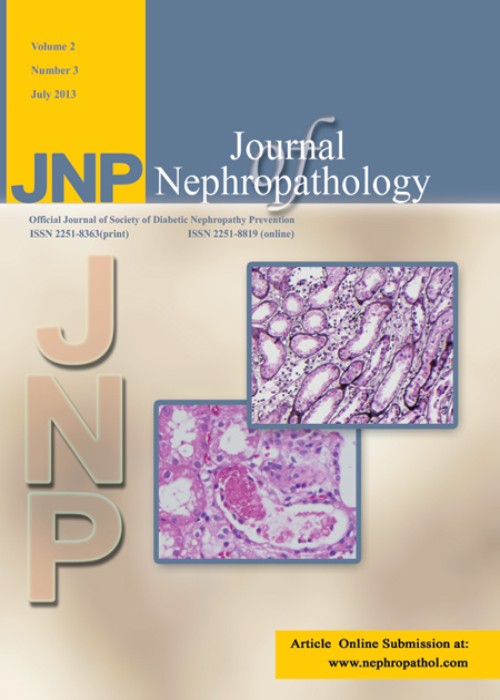The standard dose versus double dose of N-acetylcysteine to prevent contrast-induced nephropathy; a randomized controlled clinical trial
Author(s):
Article Type:
Research/Original Article (بدون رتبه معتبر)
Abstract:
Background
Contrast-induced acute kidney injury (CI-AKI) is one of the possible complications in angiography, which its prevention is important. N-acetylcysteine is one of the compounds that has recently been more investigated regarding its effect on CI-AKI.Objectives
The aim of this study was to investigate the effect of standard dose and twice-thestandard of N-acetyl cysteine on prevention of contrast-induced nephropathy.Patients and
Methods
In a clinical trial, 154 individuals who were referred for angiography and had glomerular filtration rate (GFR) ≤60 mL/min, enrolled in and randomly divided into two groups. Group A received the usual dose of N-acetyl cysteine and group B received twice the standard. Blood urea nitrogen (BUN), creatinine, and GFR values were measured and recorded at intervals before, 24, 48 and 72 hours after angiography. Other required laboratory parameters were also measured and recorded.Results
The results of this study indicated that the effect of double dose in males and females is not different. It also has a reverse effect on renal function in older patients. Its effect did not differ in diabetic patients compared to non-diabetic patients. N-acetyl cysteine in dose of twice the standard has not any effect on renal function in patients with hyperlipidemia, hypertension, myocardial infarction, pulmonary edema as well as smoker patients. In patients with congestive heart failure (CHF), N-acetyl cysteine in dose of twice the standard had a positive effect on renal function compared with those who did not have CHF. An interesting point in our study was the negative effect of N-acetyl cysteine in dose of twice-the-standard on renal function in patients with lower hemoglobin and hematocrit levels.Conclusions
Our study showed that an increase in the dose of N-acetyl cysteine is not effective in preventing contrast-induced nephropathy and improving renal function. Of course, in some groups, such as those with CHF, a positive effect was detected. Additionally, in some groups including patients with lower hematocrit and hemoglobin, an increase in dose is associated with a negative effect on renal function.Keywords:
Language:
English
Published:
Journal of nephropathology, Volume:7 Issue: 3, Jul 2018
Pages:
145 to 150
magiran.com/p1851087
دانلود و مطالعه متن این مقاله با یکی از روشهای زیر امکان پذیر است:
اشتراک شخصی
با عضویت و پرداخت آنلاین حق اشتراک یکساله به مبلغ 1,390,000ريال میتوانید 70 عنوان مطلب دانلود کنید!
اشتراک سازمانی
به کتابخانه دانشگاه یا محل کار خود پیشنهاد کنید تا اشتراک سازمانی این پایگاه را برای دسترسی نامحدود همه کاربران به متن مطالب تهیه نمایند!
توجه!
- حق عضویت دریافتی صرف حمایت از نشریات عضو و نگهداری، تکمیل و توسعه مگیران میشود.
- پرداخت حق اشتراک و دانلود مقالات اجازه بازنشر آن در سایر رسانههای چاپی و دیجیتال را به کاربر نمیدهد.
In order to view content subscription is required
Personal subscription
Subscribe magiran.com for 70 € euros via PayPal and download 70 articles during a year.
Organization subscription
Please contact us to subscribe your university or library for unlimited access!


